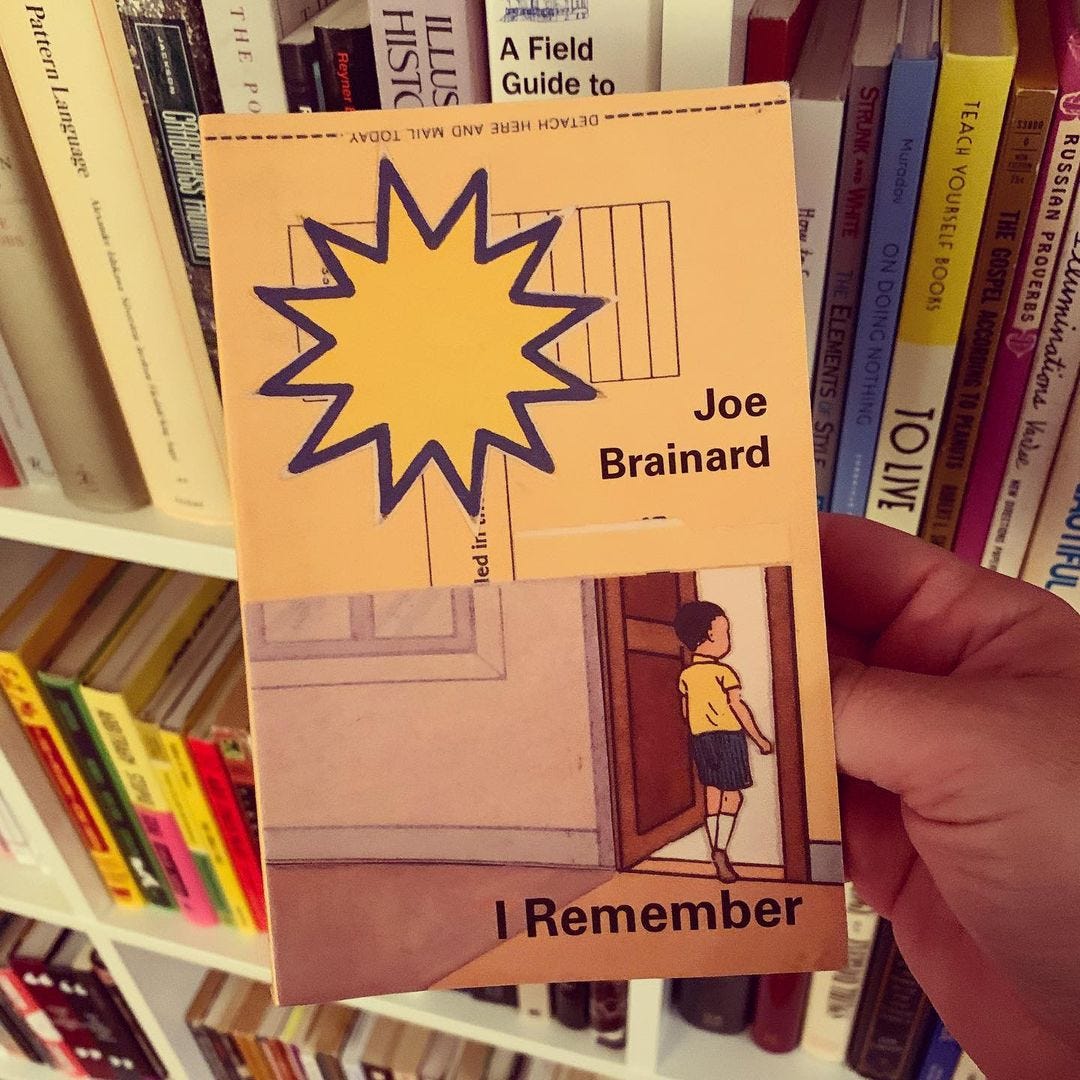
As autobiography, Brainard’s method was brilliantly simple: to set down specific memories as they rose to the surface of his consciousness, each prefaced by the refrain “I remember”: “I remember when I thought that if you did anything bad, policemen would put you in jail.”
Students I work with express the fear that they don’t have a story that’s “good enough” or “big enough” to write about. However, it’s often the tiny moments that create a significant impact on our lives and shape our character.
I love exploring Joe Brainard’s “I Remember” by having students take turns reading an excerpt aloud. Then, we discuss how each “I Remember” statement uses specific images, observations, and reflections to capture small moments from the narrator’s childhood and impact readers.
Even that one page we read together opens a window into the immediate and visceral sense of Brainard’s humor, self-deprecating personality, and gentle demeanor.
I’ve read this same excerpt with countless students. Still, I continue to be astounded by their varied observations about these story moments that juxtapose the banality of everyday life with the profound.
Take these two for example:
I remember the only time I ever saw my mother cry. I was eating apricot pie.
I remember how much I used to stutter.
Students have pointed out the bittersweet beauty behind how the first one rhymes, heightening the contrast between the sad memory and the sweetness of the pie.
Recently, a student observed that “the only time” signifies how rare it was for the mother and the narrator to express emotion, so much so that he remembers what he was eating.
In a different class, another student said that they thought the young narrator didn’t understand what was happening with his mother, so he reported what he ate instead.
Whenever we read the “I Remember” excerpt, I ask students to circle one that jumps out at them, and they regularly choose, “I remember how much I used to stutter.”
It amazes me how two small words, “used to,” which students interpret as meaning that the narrator no longer stutters, prompt big discussions of the childhood obstacles they’ve overcome.
Brainard’s “I Remember” is a beautiful way to illustrate how unique is universal—it’s the specific story details (like what kind of pie you ate that one time you saw your mother cry) that open up the experience to connect emotionally with readers.
“I Remember” is also an easy and effective brainstorming tool for mining your memory for small but significant story moments. Go ahead, try it!
Set a timer for five minutes and see how many “I Remember” statements you can generate. Make them one or two lines like the examples above, and don’t be afraid to let your brain popcorn around to bring up memories from different periods in your life. They don’t have to connect in any linear way.
The only rule is to keep your pen (or pencil, if that’s your thing) moving on the page for five minutes. You might be surprised at what pops up...
Here are two story moments that stuck with me from a school I visited last week:
I remember the beeping of the breathing tubes.
I remember it had cheese.
I felt these in my gut, the first as a punch and the second as a belly laugh. However, I want to hear more about both stories!
I would also love to hear some of your “I Remember” story moments. Feel free to comment or send them directly.
Happy Writing!
Want to learn more about using “I Remember” to generate ideas for your college essay? Reach out for information on upcoming workshops and private coaching.




